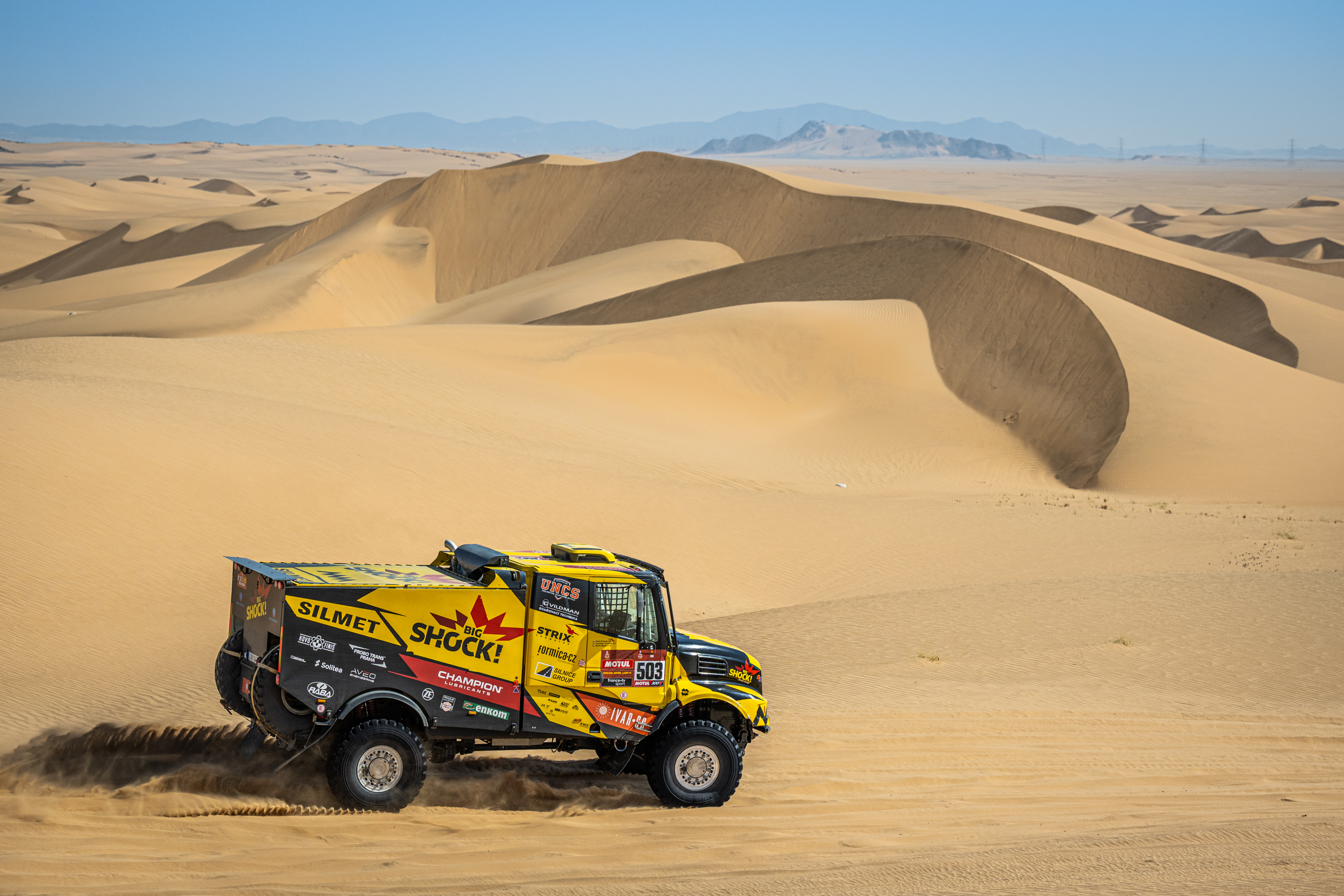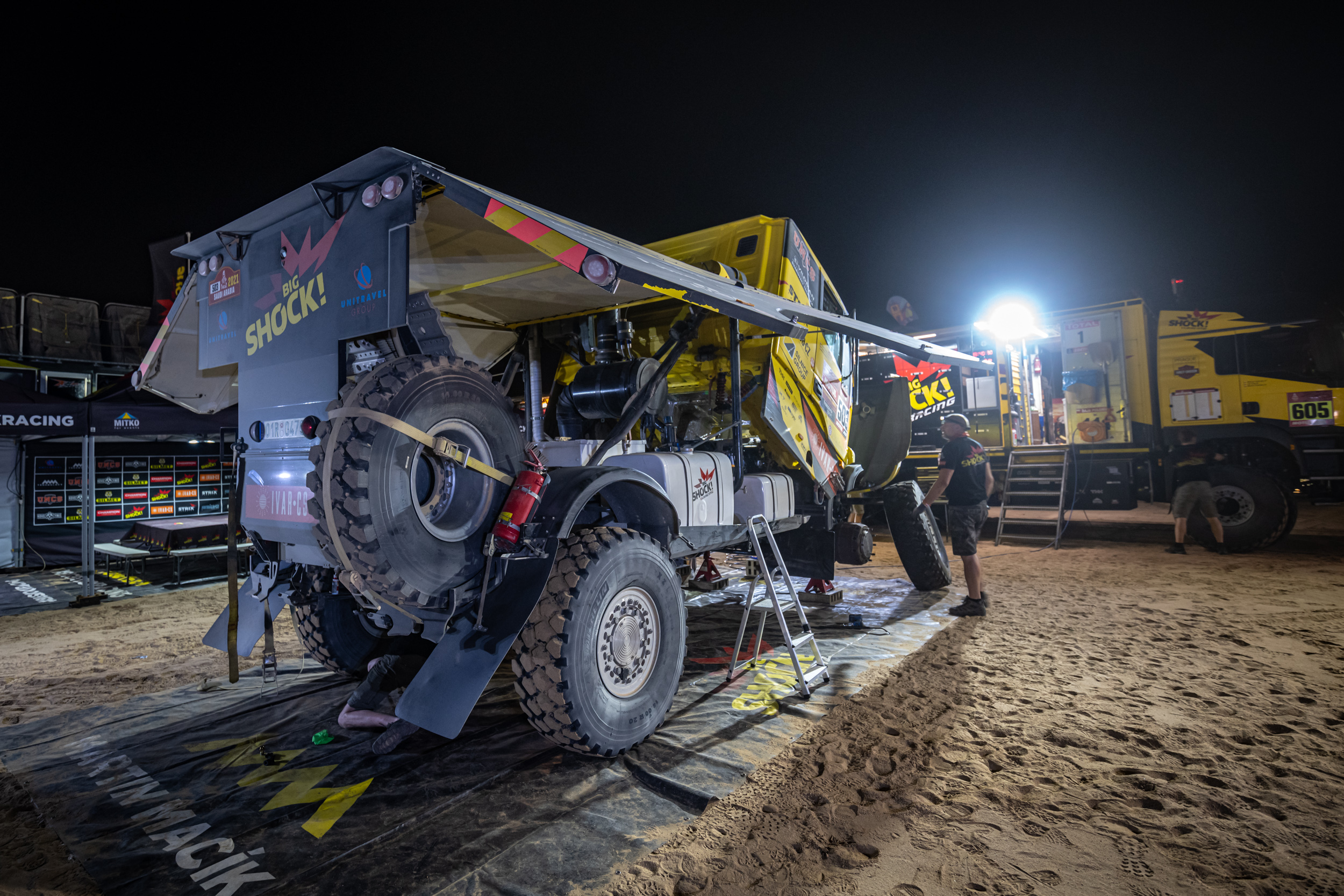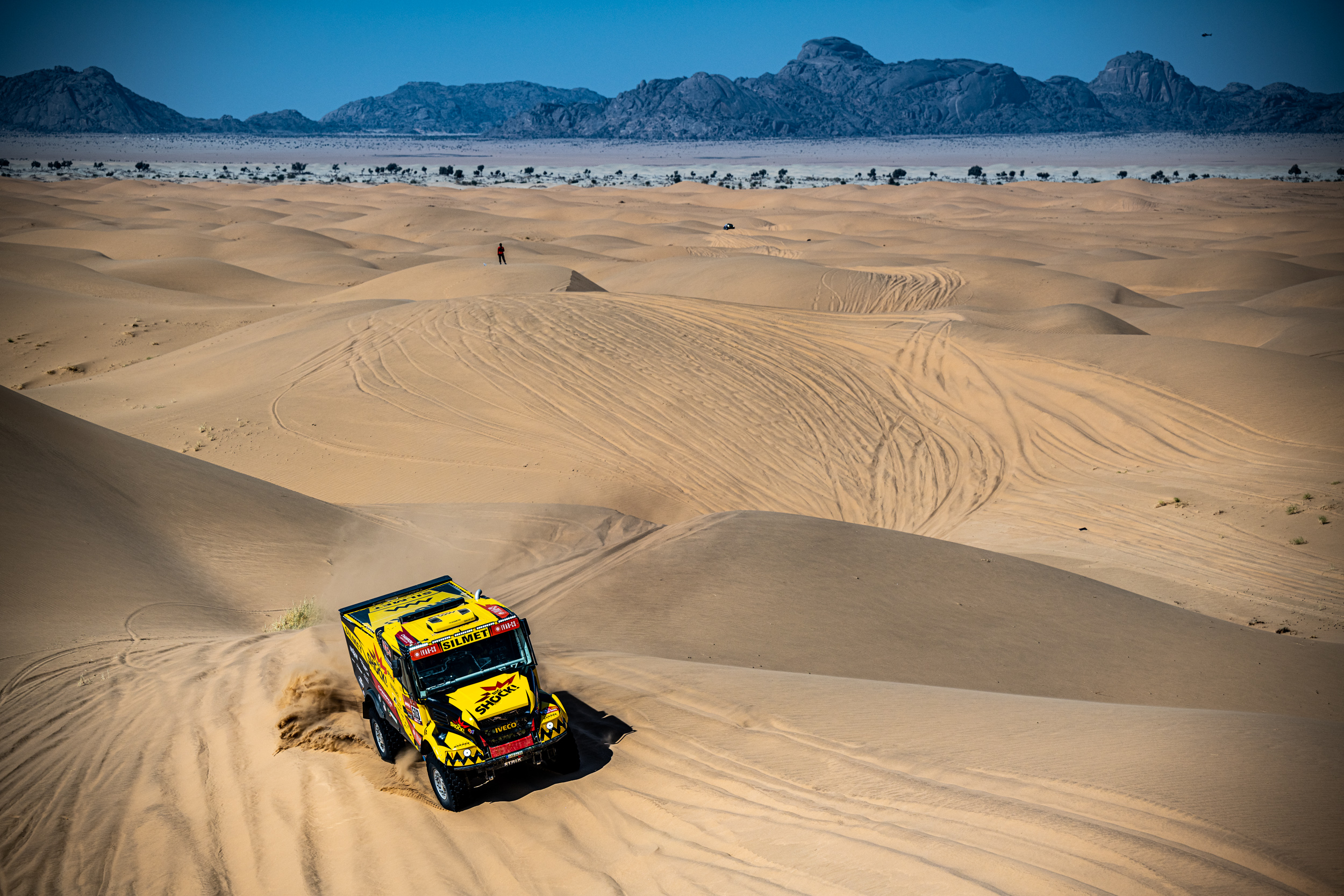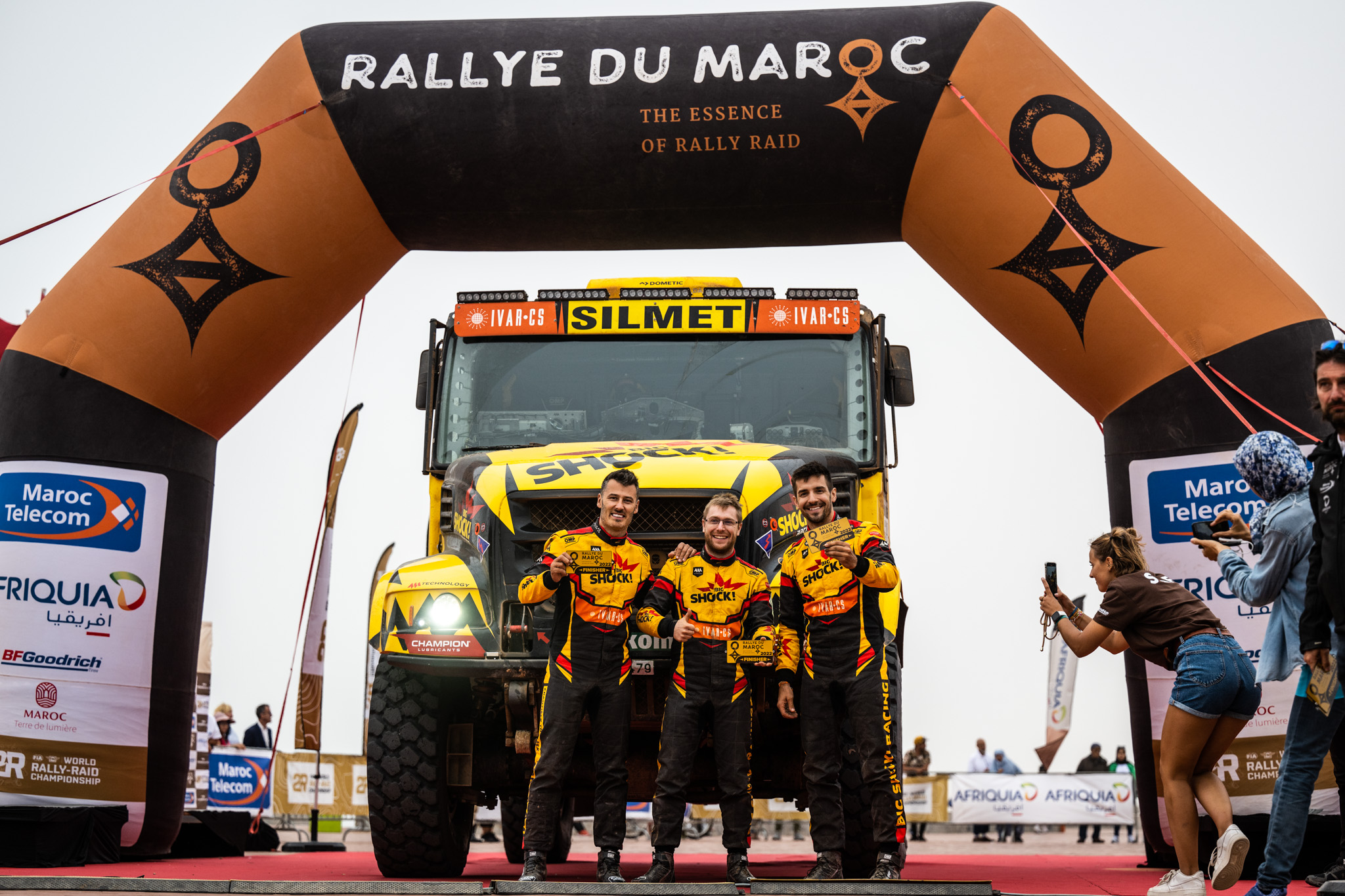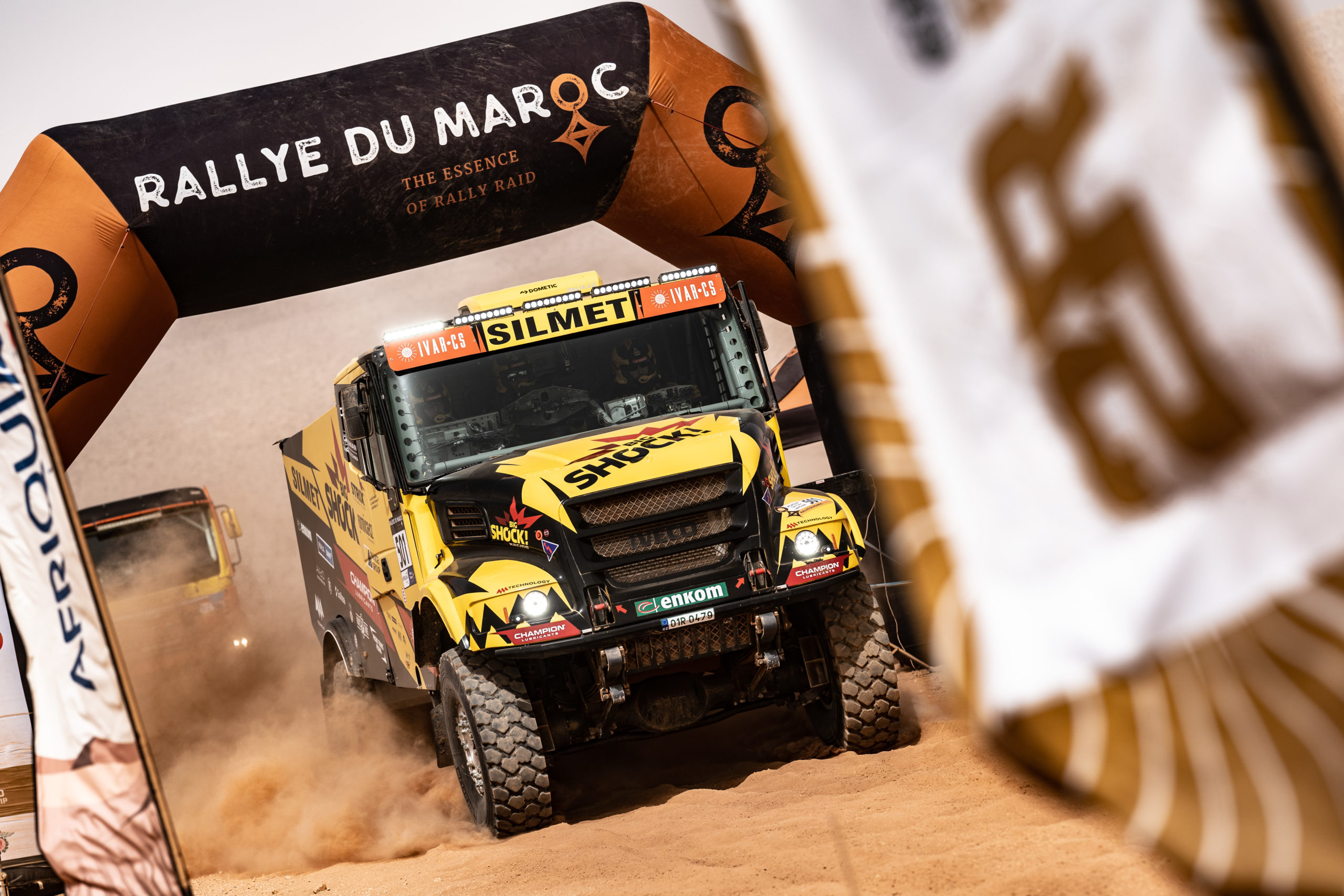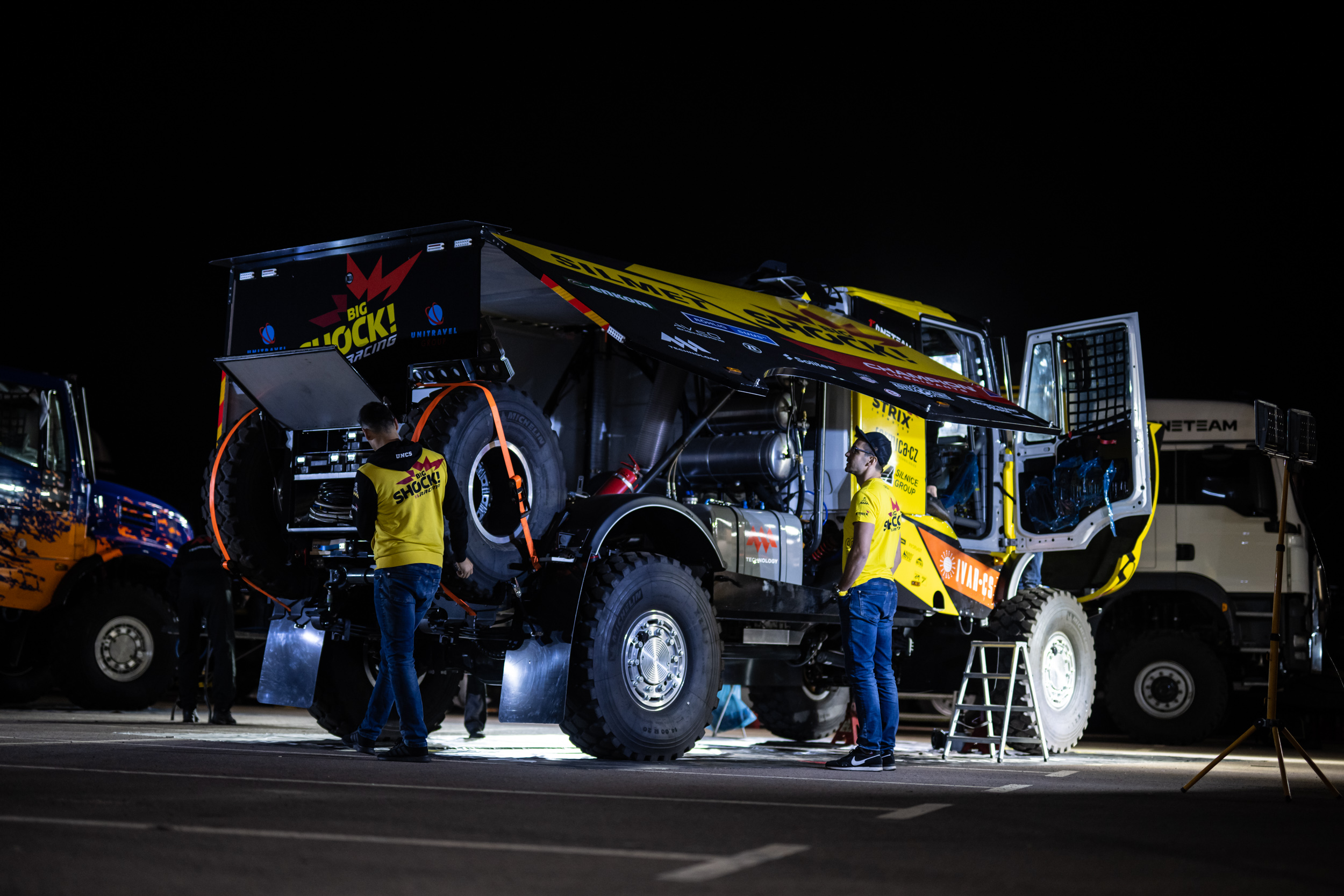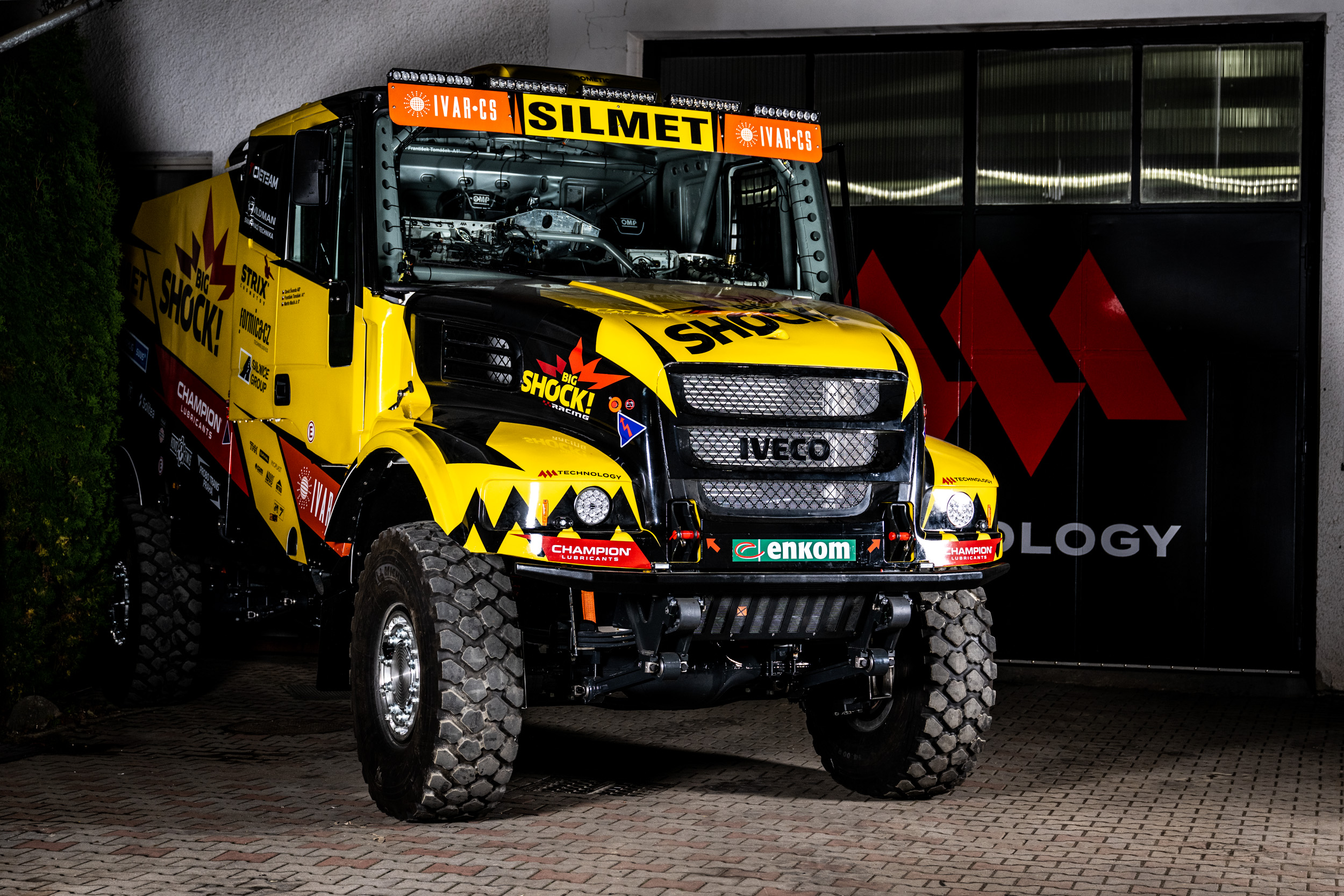The Big Shock! Racing team reached an excellent fifth place in the second demanding stage of the Dakar and holds the 4th position in the overall ranking. This time, too, there was no shortage of adventures. The crew of the yellow truck consisting of Macik, Tomasek and Svanda drove 457 kilometres in a vibrating truck. Charles, their truck, drove well. Nevertheless, the crew was unnerved by unidentifiable vibrations. Even after a short stop, they could not find the cause. In the treacherous dunes, the driver Martin Macik also tested the automatic gearbox for the first time. Thanks to a balanced ride, the Czech crew again managed to keep their position among the fastest and maintained a valuable starting position for the next stage.
We don’t want to go to extremes
From the start of the second stage, Charles, the Big Shock! Racing team’s yellow truck kept its position among the top five trucks. The driver Martin Macik knows from the eight previous Dakar rallies the result of the race is far from decided in the first stages. Therefore, he relies on balanced performance, but at the same time keeps pace with fast Russian and Belarusian competitors. “I have to say it was something. Our car kept vibrating the whole time. We have no idea why. It drove really well, but it rattled. The track was varied, fun. The last 70 kilometres were properly challenging. In these fast sections, it’s really about bravery, because you drive at a speed of 140 km/h through all kinds of nasty things. Anyway, we know we can be even faster. We don’t want to go to extremes yet, it’s only the second stage,” Martin Macik explained.
Dunes: LEVEL 3
There was no gradual start. The 2021 Dakar had a sharp start. After the first day full of navigation traps, the organizers sent the competitors to the second stage on Monday to cover a track of 457 sharp kilometres, and the plans also included “level 3” dunes, i.e. the highest difficulty. When leaving the bivouac, the crew of the Big Shock! Racing team was looking forward to experiencing a ride in the real Dakar sand again after a year. This kind of terrain suits the driver Martin Macik. “An interesting stage when it comes to navigation. For the first time this year, we got to experience beautiful dunes – and there certainly were quite a few. Some were very treacherous. We went past some buried crews there,” the navigator Tomasek reported. In addition, this year, for the first time, the team truck Charles set off into the dunes equipped with an automatic gearbox, which should speed up the ride. “The gearbox works the way it should. It gives me peace of mind, I can focus more on the steering wheel. We sped up through some parts of the track. The ride is smoother. We are still getting used to the sand because it just works differently. I have to play with the gears and I also partially shift the gears manually. I needed to figure that out today, that’s why we were overtaken by the two Kamaz trucks in the opening dunes. But we quickly found out what to do with it and sped up again,” Macik described his first experience with the automatic gearbox in the dunes.
Charles is fast, but it rattles
“We were quite tense from the start because our car kept vibrating. We don’t know why. It even made us stop. I got out to check everything. But there was nothing wrong with the truck, everything was in place. Everything was working. So, we kept driving straight to the finish line. But still, there is something unidentifiable rattling in there. We have to figure it out in the bivouac,” the mechanic David Svanda described the technical mystery of the second stage. The fact that Charles drives well and the mechanics are not very busy with the truck yet can be attributed to the nineteen years of experience and development of the team leader Martin Macik, Sr., who manages the construction of new trucks in the Sedlcany workshops. Another one of his trucks is driven by Jaroslav Valtr, who is also taking place in this year’s Dakar. Maurik van den Heuvel’s Dutch truck is built on the chassis made in Sedlcany, too. “We develop the technology ourselves, we do not have it rented or purchased. We build everything ourselves and project the experience from all previous Dakar rallies into the new vehicle. This also makes technical maintenance easier. Technical mysteries like the one from today’s stage simply belong to the Dakar. It’s probably going to be something trivial,” Martin Macik, Sr. said.

